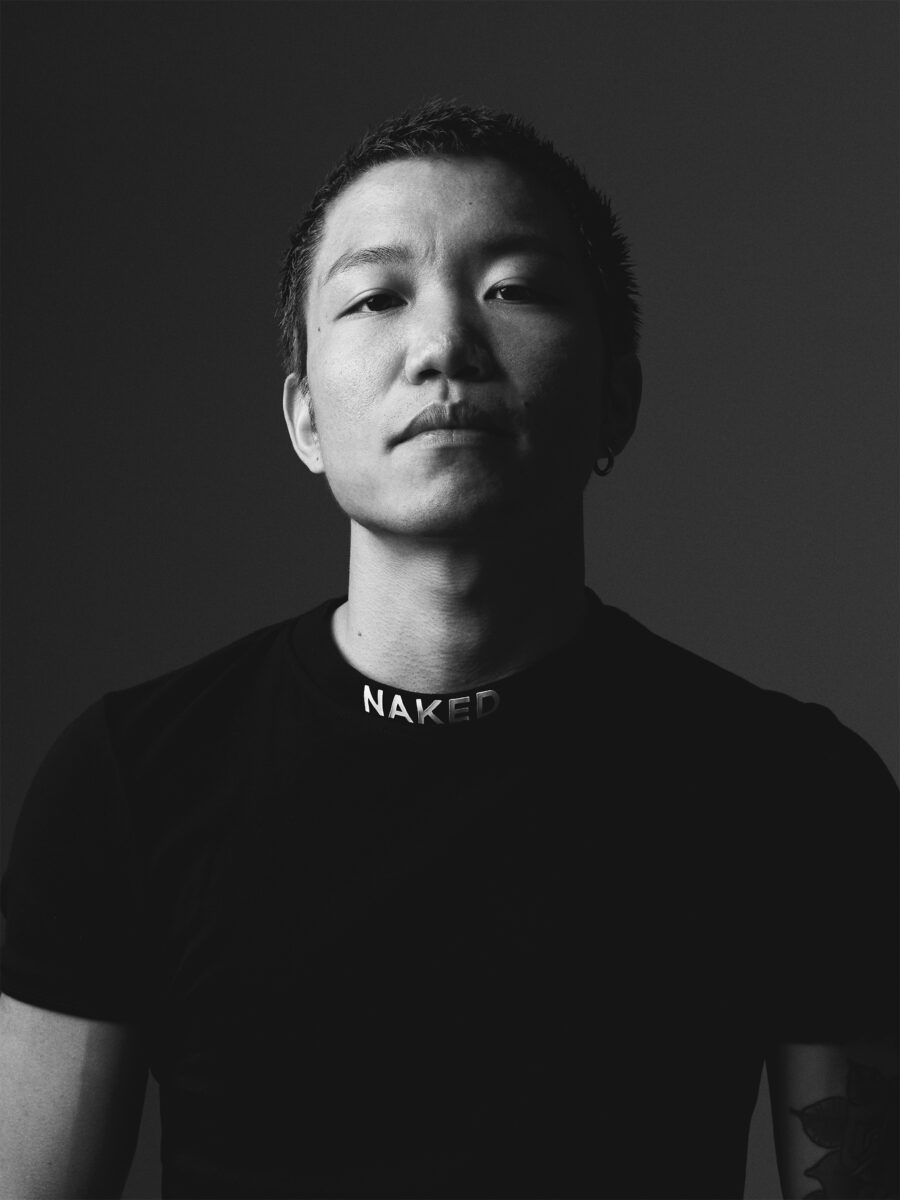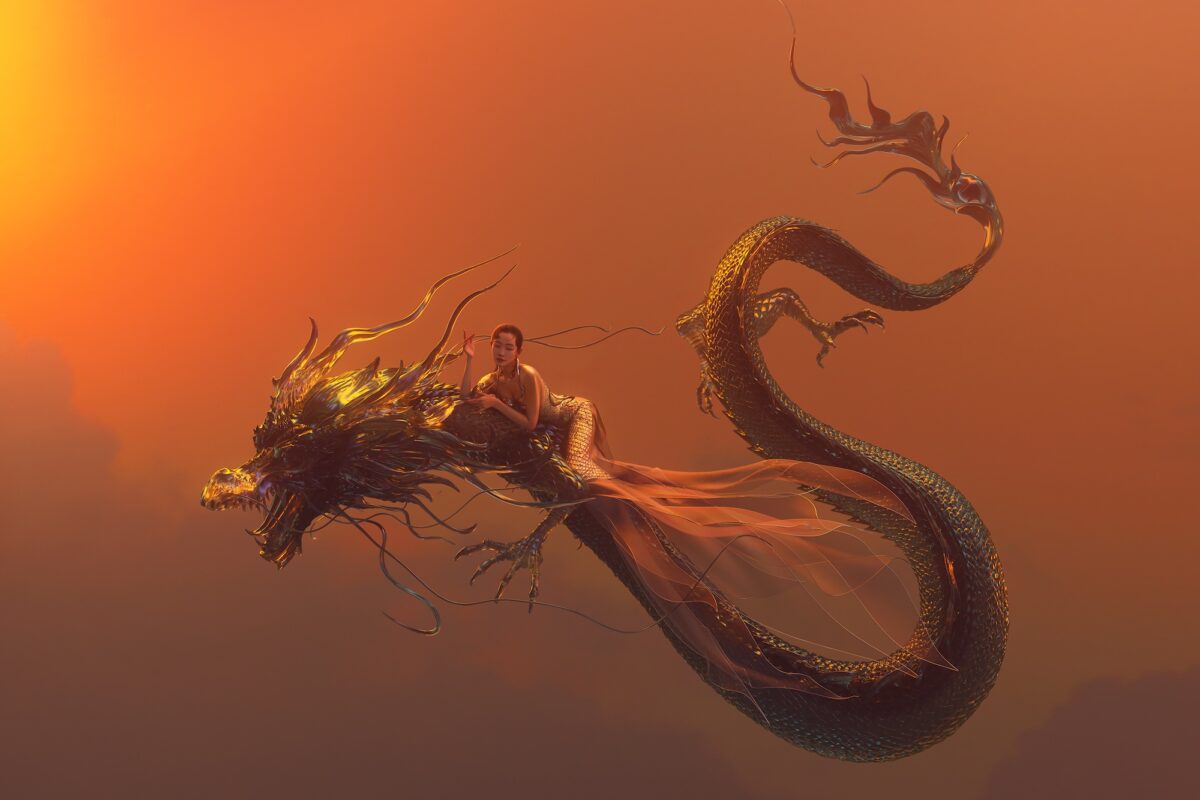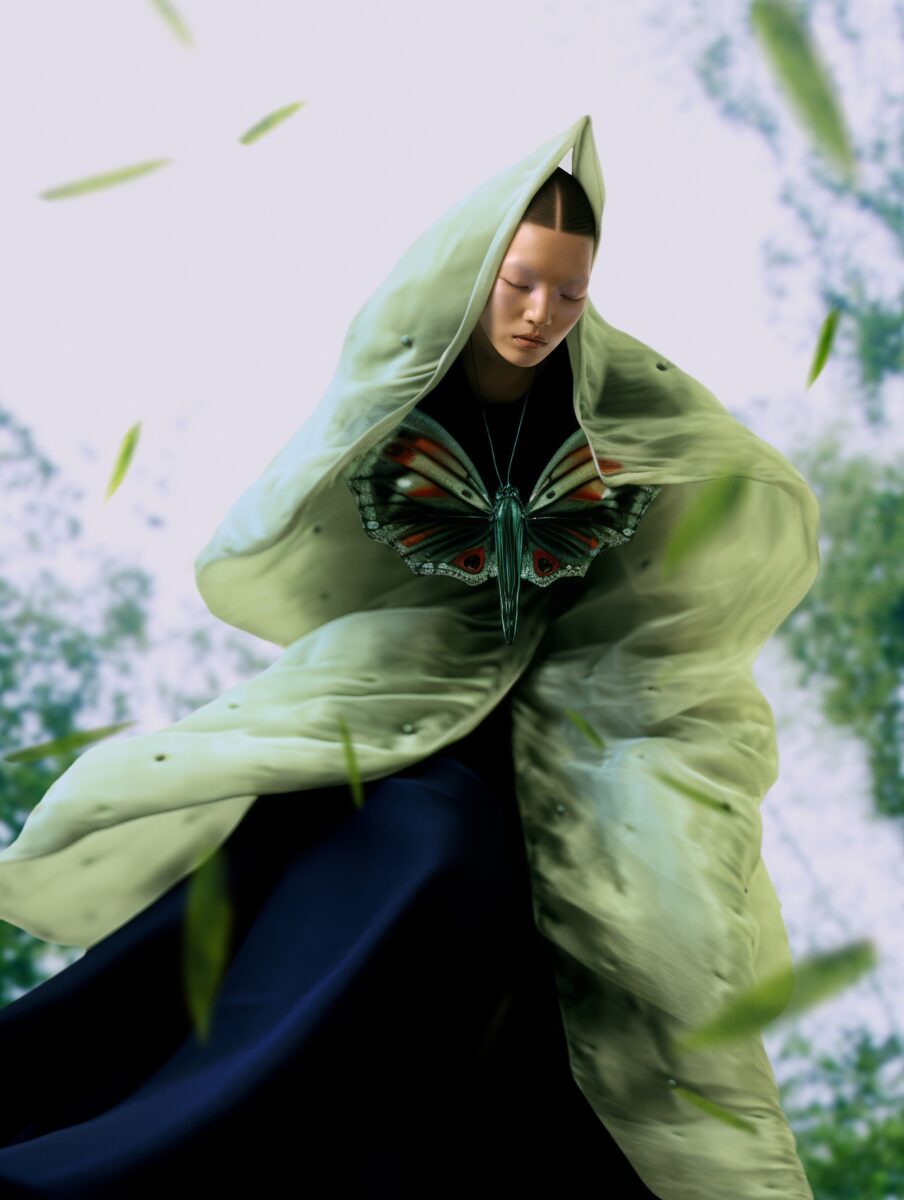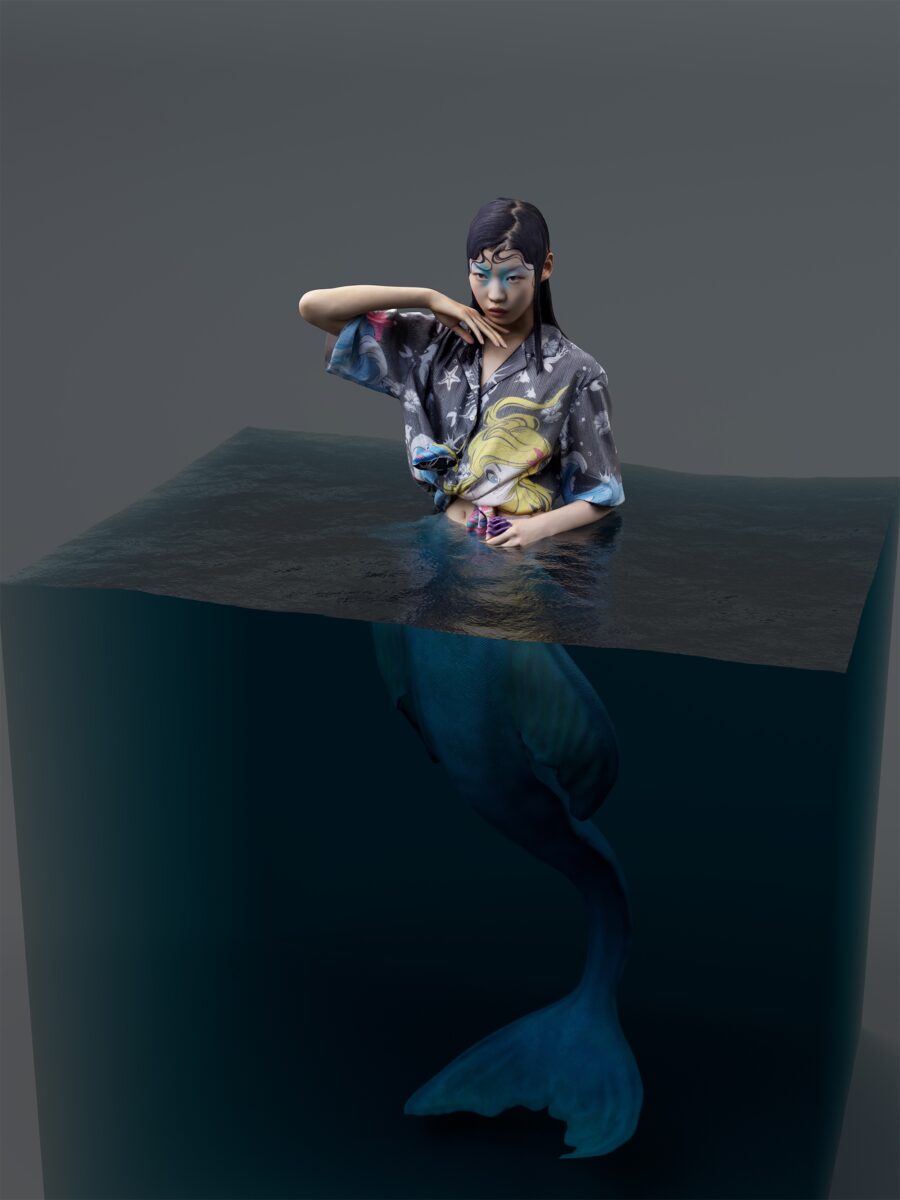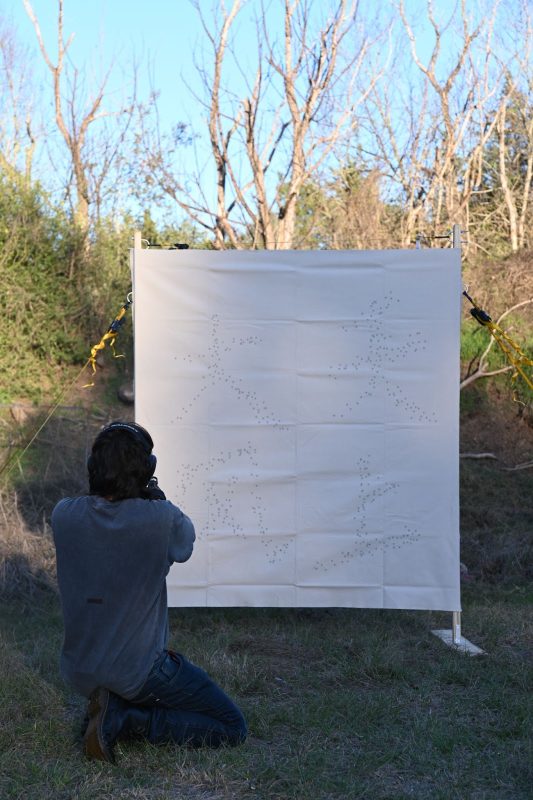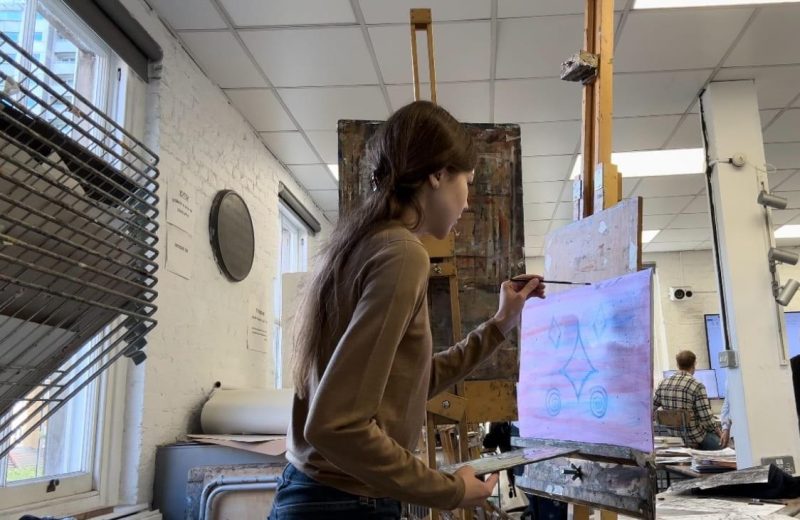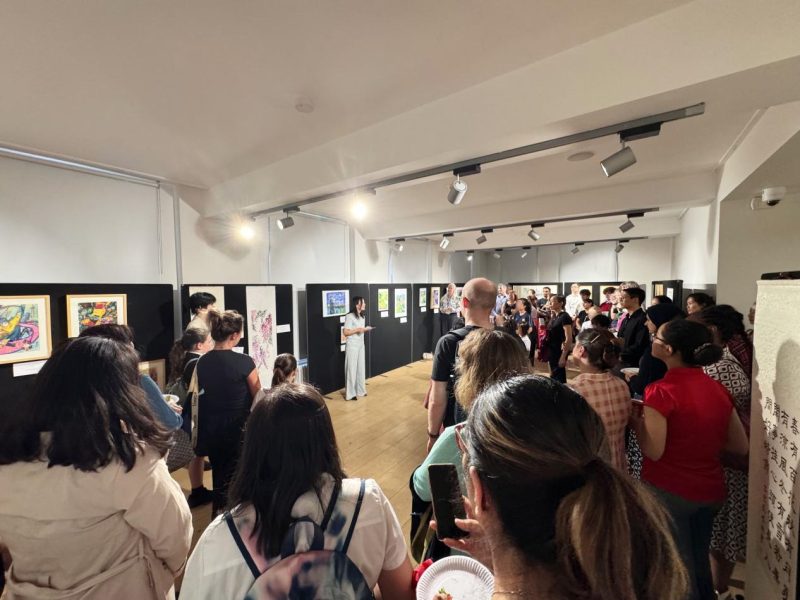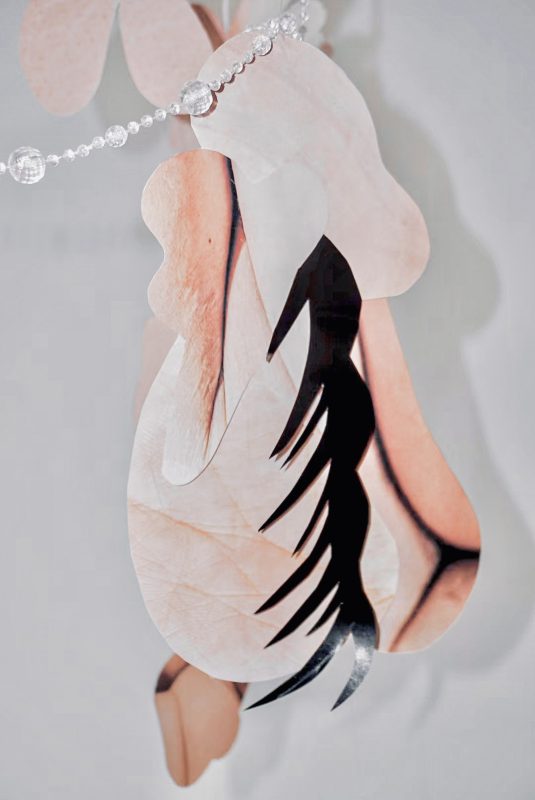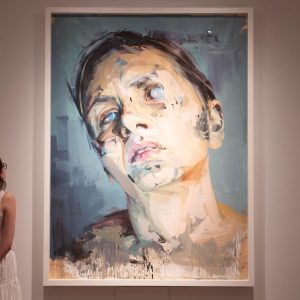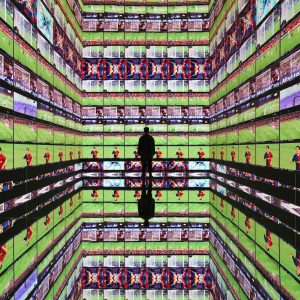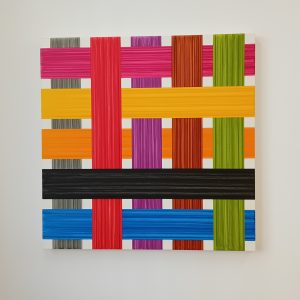Words Yijia Liu & Luyao.
Chen Momo is a visual artist who constructs surreal worlds through digital imagery. His works fuse traditional Chinese culture, mythological imagery, and contemporary digital technology, creating a unique visual experience in a dimension where reality and dreams converge. His art is not only an innovative interpretation of Eastern aesthetics but also a cultural narrative that transcends time and space, exploring the intricate relationships between humanity and nature, identity and memory, history and the future at the intersection of technology and art.
In his visual world, the fantastical creatures of the Shan Hai Jing traverse modern contexts, the fluidity of ink painting is revitalized through digital light and shadow, and classical philosophy transforms into surreal visual symbols. He excels in using CG technology to break traditional culture free from static storytelling and bring it into a vibrant digital realm. In his works, light and shadow seem to breathe, figures oscillate between reality and virtuality, and every detail carries a unique visual logic, imbuing his creations with both immersion and symbolic meaning.
His artistic language emphasizes “flow” and “fusion”—the subtle shifts in light and shadow, the sculpting of virtual textures—all contribute to a visual tension that transcends physical reality. His works weave together Eastern elements and futuristic imagery, embodying both the stark, metallic aesthetics of technology and the soft, poetic fluidity of ink wash painting, forming a distinctive “digital Eastern aesthetic.” He masterfully captures intricate details, integrating traditional patterns, costumes, and textures with futuristic materials, ensuring that his works bear the weight of history while maintaining the lightness of contemporary visual experiences.
However, his creations are not merely visual explorations; they are also profound reflections on cultural identity. In the context of globalization, he redefines Eastern aesthetics, revitalizing them in the digital age. His works are not mere replicas of tradition but reconstructions based on a deep understanding of cultural symbols, imbuing them with contemporary narrative value. Within his visual universe, humanity and nature, technology and faith, history and the future intertwine, constructing a surreal space that feels both familiar and unfamiliar. Through an immersive visual experience, his art guides audiences to contemplate their cultural belonging and spiritual connections.
“Meta-Abyss”: A Cross-Boundary Journey Between Eastern Mythology and Digital Technology
On December 14, 2024, Chen Momo held his solo exhibition Meta-Abyss in London. Using digital art as a medium, the exhibition fused Eastern philosophy with modern technology to create a surreal world where reality and illusion intertwine. Divided into four chapters—“Wonderland,” “Arrival,” “Balance,” and “Entanglement”—the exhibition guided audiences through a visual narrative where mythology and the future, nature and technology, seamlessly converge.
Wonderland: The Pursuit of an Ideal Realm
The exhibition opens with “Wonderland,” inspired by the legendary paradise from ancient Chinese mythology, crafting a surreal utopia beyond the constraints of reality. Flowing light and floating natural elements intertwine, outlining a spiritual haven free from worldly limitations.
One of the most representative works in this chapter is “Flying Dragon.” The image depicts a golden dragon soaring through a crimson sea of clouds, its shimmering scales radiating an aura of mystery and majesty. A woman, draped in sheer fabric, rides on the dragon’s back, moving with the wind as if harnessing the forces of heaven and earth, traversing between dreams and reality. The dragon not only symbolizes authority and spirituality in Eastern culture but also embodies the courage to break through reality and pursue spiritual transcendence. With dynamic lighting and fluid motion, the piece immerses viewers in the sensation of rushing wind and swirling mist. It is a visual interpretation of the ideal realm of “Wonderland,” as well as a heartfelt homage to cultural heritage.
Arrival: Imagining the Future World
As the exhibition progresses, “Arrival” explores the fusion and conflict between future technology and traditional culture. Through digital techniques, Chen Momo intertwines the imagery of Chinese bamboo forests with cyber aesthetics, envisioning the dawn of a future world. In his concept, even the serene bamboo groves of the mountains could become spaces where mechanical intelligence coexists, blurring the boundaries between humanity and technology.
The artwork “Butterfly” serves as a visual interpretation of this theme. In the image, a woman draped in delicate green gauze gently closes her eyes, like a butterfly still within its chrysalis, awaiting the moment of transformation. In Eastern culture, the butterfly symbolizes the metamorphosis of life, carrying metaphors of the soul, freedom, and transcendence. Through the lens of digital art, she is not only an emblem of individual existence but also a profound metaphor for the intersection of culture and time. The subtle interplay of light and shadow creates an emotional resonance between reality and the future, prompting viewers to reflect on how technology shapes the spiritual world of tomorrow.
Balance: Reflections on the Relationship Between Nature and Technology
The “Balance” chapter is centered around the Chinese philosophy of the Five Elements (Metal, Wood, Water, Fire, and Earth), exploring the symbiotic relationship between nature and life, the individual and the world. The Five Elements not only represent the fundamental components of all things but also symbolize the cosmic order of balance. In this section, Chen Momo reconstructs this philosophical system through digital imagery, giving tangible form to the forces of nature and revealing the fluidity of life and the beauty of equilibrium.
The artwork “Fire” embodies the coexistence of heat and destruction, rebirth and transformation. In the image, a woman dons a fiery red gown with sharp, flame-like edges, as if her dress bears the marks of burning embers. She stands upon a terrain of obsidian-like molten rock, where the last remnants of heat continue to pulse beneath the surface. Behind her, a translucent fire-fox spirit flickers in and out of view, appearing as a guardian born from the flames. With a poised and composed expression, she embodies the soul that commands fire, illustrating the wisdom of finding renewal within destruction.
Fire, both consuming and illuminating, both destructive and generative, mirrors its role in the Five Elements—associated with li (ritual and order), symbolizing spirit and vitality. Through digital artistry, Chen Momo infuses fire with both resilience and spirituality, allowing audiences to experience a striking visual spectacle that evokes the grandeur of life’s transformation.
Entanglement: The Fusion and Reinvention of Culture
The final chapter of the exhibition, “Entanglement,” explores the transmission and integration of culture. In the context of globalization, how does one find belonging between history and the future? How can Eastern aesthetics be revitalized in the digital age? Through intricate visual expression, Chen Momo allows these questions to find their answers within the fluid interplay of reality and illusion.
The artwork “Entanglement” embodies this concept in visual form. In the image, a woman floats partially above the water’s surface, while beneath, she transforms into a deep blue fish. The water’s surface serves as the boundary between reality and dreams—two distinct yet inseparable worlds. Her expression is tranquil as she yields to the movement of water, merging with the life below. This is not just a fusion of forms but a symbiosis of the soul. Water, both an all-encompassing and shaping force, reflects her true self above while revealing another version of her below. Rooted in the Eastern philosophical concept of “the unity of heaven and humanity,” this piece contemplates how individuals reconcile with themselves and exist in harmony with the currents of culture and time.
Meta-Abyss: A Cultural Journey Through Time, Memory, and the Future
Meta-Abyss is not merely a visual exhibition but a cultural odyssey through time, memory, and the future. Within the shifting depths of digital light and shadow, Chen Momo weaves a surreal narrative where Eastern mythology, technological landscapes, and the human spirit intertwine.
From the celestial visions of “Wonderland” to the futuristic gaze of “Arrival”; from the elemental philosophy of “Balance” to the cultural synthesis of “Entanglement,” each chapter serves as a gateway through time, guiding the audience across the thresholds of antiquity and the future, mythology and reality. Here, dragons soar through the clouds, butterflies dream in cybernetic bamboo forests, flames burn only to give birth to new life, and water mirrors the past and future selves of those who gaze upon it.
Technology is no longer a cold and mechanical tool—it becomes a vessel for memory and emotion, breathing new life into ancient Eastern philosophies within the digital realm.
This is a poetic journey through time, an inquiry into identity, culture, and the future. When reality and dreams intertwine, when mythology awakens in pixels, perhaps within the luminous abyss of Meta-Abyss, we may glimpse a version of ourselves—both familiar and unknown.
